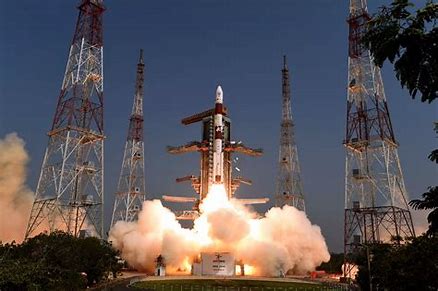SRIHARIKOTA: The Indian Space Research Organisation (ISRO) successfully entered the global small satellite launch market with the triumphant launch of the Small Satellite Launch Vehicle (SSLV-D3) on Friday morning. This marked the final developmental flight of the SSLV, which lifted off from the Satish Dhawan Space Centre’s first launch pad at 9:17 am, carrying the EOS-08 earth observation satellite and the SR-0 Demosat passenger satellite.
Approximately 13 minutes after liftoff, the SSLV-D3 rocket accurately deployed the 175.5 kg EOS-08 satellite into a 475 km circular low Earth orbit. Shortly thereafter, it placed the 0.2 kg SR-0 Demosat, developed by Space Kidz India, into the same orbit.
ISRO Chairman S Somanath announced the successful placement of the satellites, declaring the completion of the SSLV development project and signaling the start of operational missions. He also stated that ISRO is now transferring SSLV technology to Indian industry and NewSpace India Limited (NSIL), marking a significant advancement in India’s space capabilities.
Mission Director S S Vinod emphasized that ISRO is now moving into the operational phase of the SSLV program. The SSLV, a three-stage rocket with solid propulsion stages and a liquid propulsion-based velocity trimming module (VTM) as the terminal stage, is designed to launch mini, micro, or nano satellites weighing between 10 kg and 500 kg. It is noted for its low cost, rapid turnaround time of 72 hours, flexibility to accommodate multiple satellites, and minimal launch infrastructure requirements, offering a launch-on-demand capability.
The mission’s secondary objective was to demonstrate the repeatable performance of the SSLV vehicle systems. EOS-08, developed by the U R Rao Satellite Centre, is built on ISRO’s microsat/MS-1 bus and is equipped with advanced payloads for infrared observation, a novel GNSS-R payload, and a SiC UV dosimeter. The satellite features numerous technological advancements, including an integrated avionics system, flexible solar panels, and a nano star sensor.
Avinash M, Satellite Director, highlighted that EOS-08 includes 20 new technology demonstrations, such as the Dosimeter payload, which will play a crucial role in ISRO’s upcoming Gaganyaan mission.

